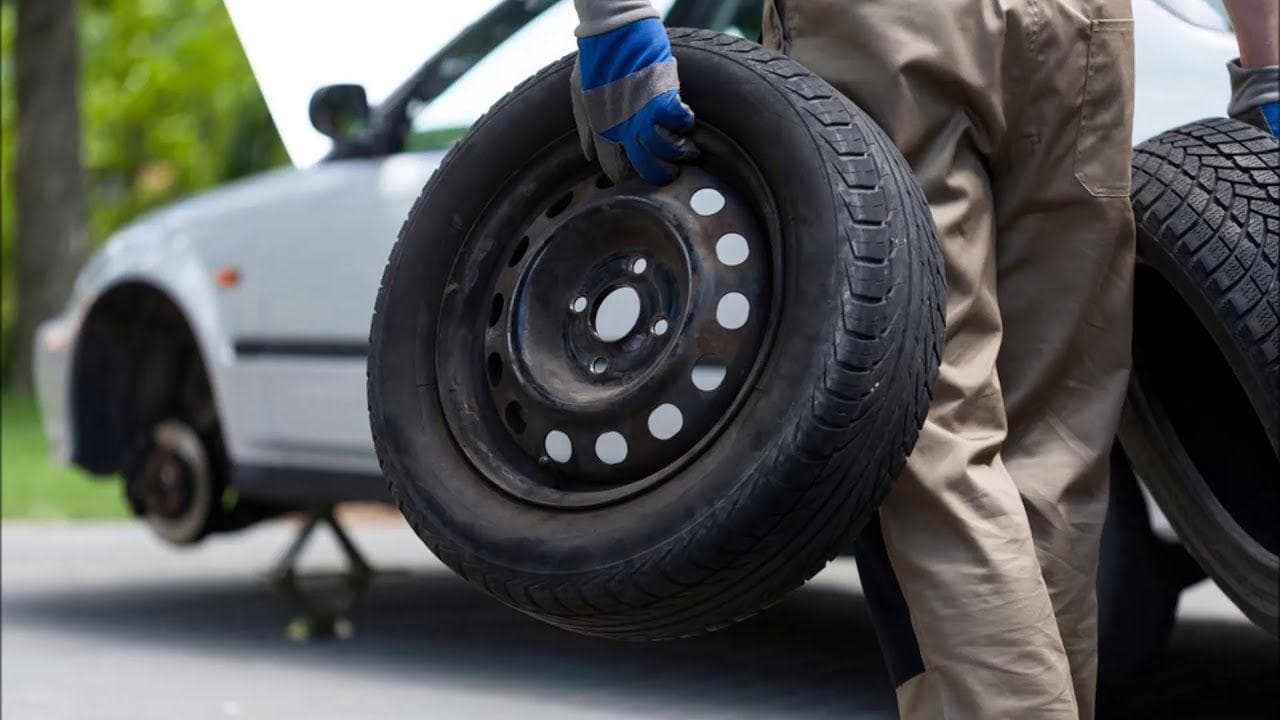Quick and Expert Mobile Tire Repair Las Vegas Solutions
Quick and Expert Mobile Tire Repair Las Vegas Solutions
Blog Article
Tire Service: Proven Approaches for Optimal Tire Upkeep and Care
Keeping ideal tire problem is critical for both safety and efficiency of any automobile. From guaranteeing correct tire pressure to normal rotation and placement, there are proven approaches that can considerably expand the life expectancy of your tires and boost overall driving experience. As we check out the intricacies of tire care and upkeep, we will discover crucial guidelines that every automobile proprietor should follow for the very best possible results. Let's dive right into the world of tire service and uncover the keys to keeping your tires in first-class form for the lengthy haul.
Significance of Tire Pressure
Ample tire pressure promotes far better fuel effectiveness, as under-inflated tires can lead to raised rolling resistance, causing the engine to work tougher and consume more gas. Proper tire pressure guarantees also step wear, enhancing tire longevity and saving cash in the lengthy run by postponing the need for premature replacements. Consistently checking and adjusting tire stress, specifically before long journeys, is an easy yet efficient way to boost lorry efficiency, extend tire lifespan, and prioritize safety on the road.
Tire Rotation Guidelines
When thinking about tire turning standards, it is vital to recognize the relevance of this upkeep job in making best use of tire life-span and keeping optimum lorry efficiency. Tire turning includes altering the setting of each tire on a car to make sure even tread wear. Front tires tend to wear more promptly than back tires because of steering forces, making regular turning critical for well balanced wear patterns. The advised turning pattern varies depending on whether a vehicle is front-wheel, rear-wheel, all-wheel, or 4x4. Commonly, tires need to be turned every 5,000 to 7,500 miles, or as recommended in the vehicle manual. Neglecting tire rotation can bring about uneven wear, influencing handling, traction, and potentially compromising vehicle safety and security. By sticking to appropriate rotation standards, motorists can extend the life of their tires, boost fuel efficiency, and boost general driving experience. Regular turning is an easy yet effective upkeep method that contributes dramatically to tire durability and vehicle efficiency.

Advantages of Wheel Alignment
Ensuring proper wheel alignment after tire turning is critical for keeping well balanced wear patterns and making best use of lorry efficiency. Furthermore, appropriate wheel alignment aids to expand the life expectancy of your tires. Misaligned wheels can trigger uneven tire wear, leading to premature tire substitute and boosted maintenance costs.

Tire Footstep Depth Inspect
Carrying out a normal examination of tire walk depth is crucial for keeping risk-free driving conditions and lengthening the life expectancy Flat Tire Repair Las Vegas of your tires. Uneven step wear can suggest issues with tire stress, positioning, or suspension, highlighting the hop over to these guys importance of normal tread deepness checks. By incorporating tire step depth checks right into your routine upkeep schedule, you can drive with self-confidence understanding that your tires are in leading problem.
Seasonal Tire Assessment
Seasonal tire evaluation is an essential element of tire upkeep that guarantees tires are ready to deal with the challenges positioned by various climate problems. In prep work for wintertime, it is vital to examine the tire stress consistently as cool temperature levels can trigger tire stress to drop. By conducting routine seasonal tire evaluations, vehicle drivers can extend tire life expectancy, improve gas efficiency, and most notably, ensure a safe driving experience in differing weather conditions.
Verdict
In verdict, keeping correct tire pressure, rotating tires regularly, aligning wheels appropriately, monitoring step deepness, and conducting seasonal evaluations are necessary practices for ideal tire treatment. By complying with these verified approaches, drivers can ensure their tires last longer, do far better, and add to overall lorry security. It is essential to focus on tire maintenance to avoid accidents, enhance gas efficiency, and lengthen the lifespan of tires.
Appropriate tire stress promotes much better gas efficiency, as under-inflated tires can lead to boosted rolling resistance, creating the engine to work more challenging and eat more fuel.When thinking about tire turning guidelines, it is vital to recognize the importance of this maintenance task in maximizing tire life expectancy and preserving optimum vehicle performance. Seasonal tire evaluation is an essential facet of tire upkeep that ensures tires are ready to deal with the difficulties presented by various climate problems. By performing regular seasonal tire inspections, drivers can extend tire life expectancy, improve fuel effectiveness, and most significantly, make sure a safe driving experience in differing weather condition problems.
In final thought, preserving appropriate tire pressure, turning tires on a regular basis, lining up wheels properly, keeping an eye on walk depth, and carrying out seasonal evaluations are important practices for optimal tire treatment.
Report this page